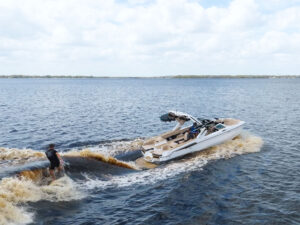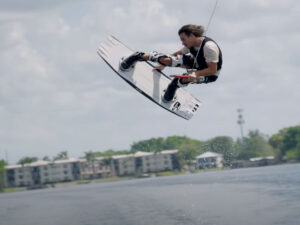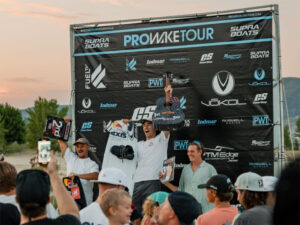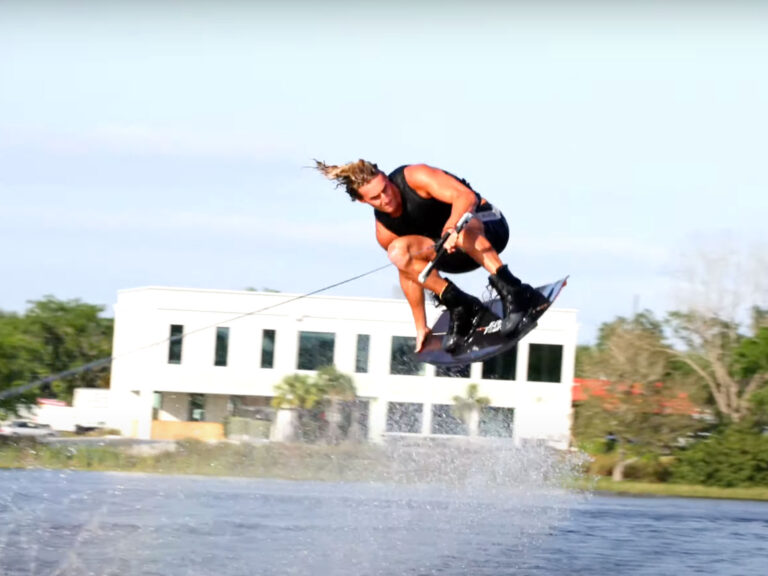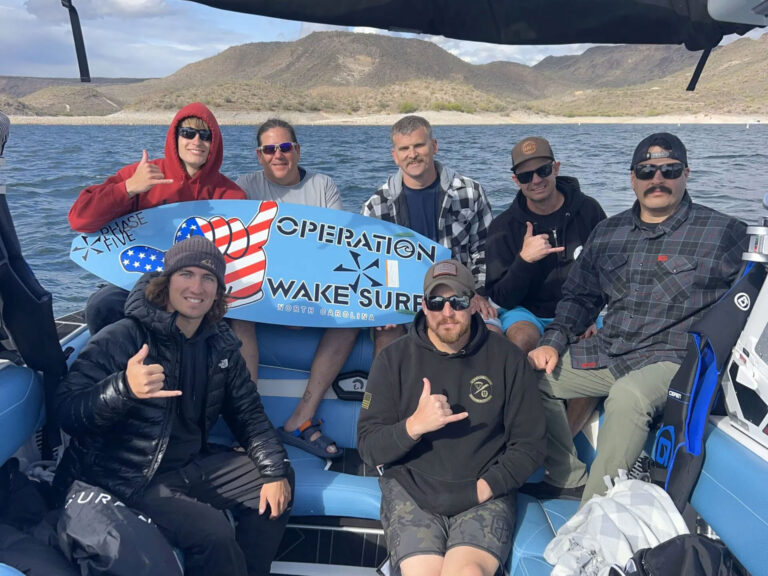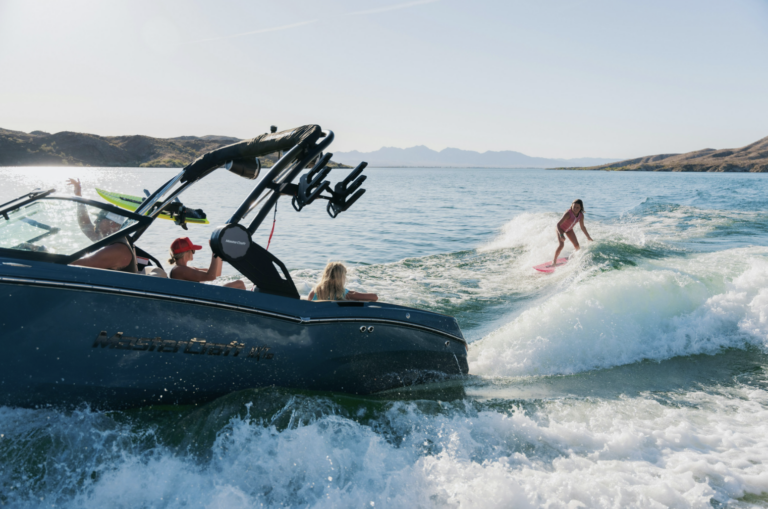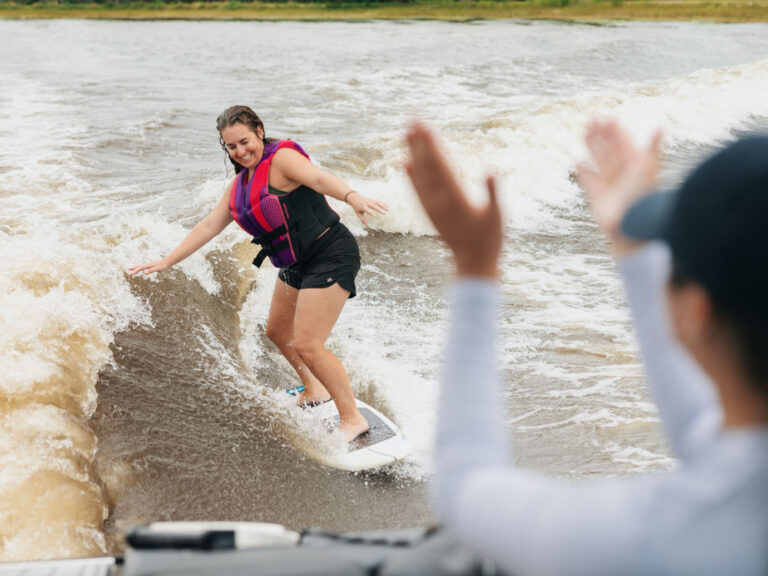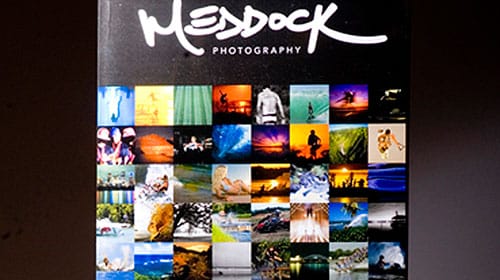
Words Kari Wilberg Photo Joey Meddock
Joey Meddock started his career as a wake photographer 10 years ago after he blew out his knee wakeboarding. Unable to ride anymore, he bought a camera to shoot his friends who were still able to ride and his career took off from there. Now he photographs for huge clients, but most importantly he is a senior photographer for WAKEBOARDING. We spoke to Joey about his new book Meddock Photography: 10 years, which encompasses his best work of the past decade, and his success in a job he says will never feel like work, but more like an excuse to hang out with his friends at the lake every day. — Kari Wilberg
What does it mean to you to have 10 years under your belt in the wake industry? It’s a great feeling. It feels like yesterday that I began this photography journey. Time has flown by so fast. It truly has been the best 10 years of my life. Photographing wakeboarding has allowed me to travel the world where I’ve really opened up my eyes. You appreciate what you have much more when you leave it behind and experience other cultures. There are so many non-photographic benefits that come with photography. Seeing something with your own eyes is just one of them.
What have you learned over the years? Photography is a challenge. I don’t think I’ll ever feel like “I know what I’m doing” with a camera. I think that constant urge to do better and outdo myself is what brings me back. Hitting a million golf balls horribly, then striking that one just right, really hitting the “sweet-spot,” is what draws me in. I always tell myself, ‘You’re only as good as the last photo you took.’ The story ends at that last photo unless I shoot something tomorrow. I learn something new every time I pick up the camera.
What advice would you give amateur photographers who idolize you and want to get some Joey Meddock trademark creativity into their work? In order to be successful and create a unique identity for yourself amongst the sea of others out there, there are several things I’d recommend. 1. You’ve got to have a niche about your photography. For me, my niche is mostly wakeboarding and wakeskating. Then, within that niche, I’ll experiment with different ideas, angles, lighting or creative techniques because I understand my subject matter. For you, it could be close-ups, portraits, animals, sunsets, blurry photos, who knows? Anything to be different is my advice. 2. Know your subject. Anticipating what is about to happen can set you up for a great photo opportunity. You’ve got to understand the behaviors of your subject and really understand what is happening to increase your odds. Don’t expect me to get a good photo of a black bear catching a fish in a running stream, because I wouldn’t even know where to start. What do I wear? What time would I shoot it? What kind of lens would I need? I don’t even know what state or country I would need to travel to. Where do black bears live anyway? 3. Increase your odds. I remember when I first started shooting I felt like a dork or a little weird because I was ‘that guy’ with a camera. Sooner or later, people got used to seeing me with it. Soon if I didn’t have it, people would say, ‘Hey, where’s your camera?’ It turns into an extension of your arm. 4. Take your camera out. Get the lens cap off and be ready to capture something. You can’t take a photo with the camera sitting in the camera bag. So many people want to come along with me and shoot, yet never take their camera out or tell me it’s in the car. I don’t get it. Wayne Gretzky once said, ‘You’ll miss 100 percent of the shots you don’t take.’ I’ll sit there sometimes and just stare through the lens until something happens or someone does something funny. Those perfect moments happen fast and you have to be ready for it.
What’s your favorite thing to shoot? I like to shoot things I’m familiar with because I feel like I can be more creative with it. I know where the boundaries are, but at the same time, the unfamiliarity and innocence of a new subject is challenging, too.
Who’s your favorite rider to shoot? I think some riding looks better in person than it does in photographs and vice versa. Some people are really photogenic and can make anything look good while others should just stick to the live form. I don’t really have favorites, but I know where my range is when it comes to that person who understands the timing and angle of trick to photograph.
What’s the best thing about shooting for the wake industry? My friends. I feel like I’ve got the best job in the world cause I get to work with my friends. Many, like myself, grew up around a lake and recognize the fun on the water. There’s a connection there. Just looking at the lake is satisfying to me. The lake as an office and getting to ride or watch people on a wakeboard or skate will never feel like work to me.
Why did you decide to make a book? It’s a good feeling to have something like that in your own hands rather than seeing it on the computer or digital file. I’ve always felt like if there were a fire in my house, I’d loose everything I’ve done for the past 10 years. As my files have grown through the years, I’ve always been more nervous about it. It’s like backing up your work on your computer. That wasn’t the driving force behind the book but definitely a strong one. I’m stoked on where I am, what I’ve done and where I’m going. I thought a book like this kind of captures that. It’s also a celebration of shooting photographs for a living for 10 years straight. I look forward to the many more to come.
What initially got you interested in photography? Tell us about how you got started. My very first interest began while I was in high school. It was more like Photo 101, shoebox cameras, processing, etc. I liked it, but didn’t really think that’s what I would eventually make a career out of. After high school, I didn’t touch it again until I blew out my knee wakeboarding a few years later. During my rehab with my knee, I bought a camera and started shooting my friends who also wakeboarded.
When did you get your first big break and what was it? I bought my camera in May of ’99, and had a photo published within 30 days because I knew some editors at WAKEBOARDING mag. I asked what or who I could shoot since I knew they were working on a sequence issue at the time. I went out and shot my good friend Ryan Wolfe doing a wake-to-wake 180. That was it. It has all snowballed from there in 10 years.
How did you land your bigger clients? Submit, submit, submit to the magazines. People ask this all the time. They don’t understand how easy it is. The publishing business doesn’t exist without images. Granted, they often have staff photographers, but they will always welcome a fresh view of eyes and images. By submitting often, you’re bound to eventually get published. If nothing else, they’ll know your name, and that’s a huge start. Once people or advertisers see your name more often in print, you’ll begin to get some recognition and hopefully they’ll have you shoot their entire product line or advertising campaign.
How did you get into shooting wakeboarding? Since I was a young kid, I’ve been in or around boats and lakes. I love it. My dad was in the boat industry for 25 years and often brought home toys for me and my sisters to try out. When he brought home the purple Skurfer, I couldn’t wait to try it. I was 11 or 12 years old when I first rode that thing. I was hooked for life. I’ve grown up around the sport and feel like I understand it. I can relate to the thought process when someone rides. I think that’s key to shooting good wake photos.
What has it been like traveling around the world for a job you love? If you love what you do for a living, you’ll never work a day again in your life. I try to keep that in perspective when I’m out in the field. I feel very blessed to have found photography.
What’s the coolest place you’ve ever been and why? Recently, I’d say Dubai. That was such a cool experience. I’ve never felt more like an outcast in all of my travels. It took a while to get used to, but once I was there for a while, I began to understand the culture better. Most Americans only see the negative on the news associated with that part of the world, but it really is a beautiful place with wonderful people.
What’re your plans for the next ten years? Keep the snowball rolling. I want to get more product and photo merchandise off the ground. I really like what Aaron Chang has done with his photography and I aspire to do something similar.
